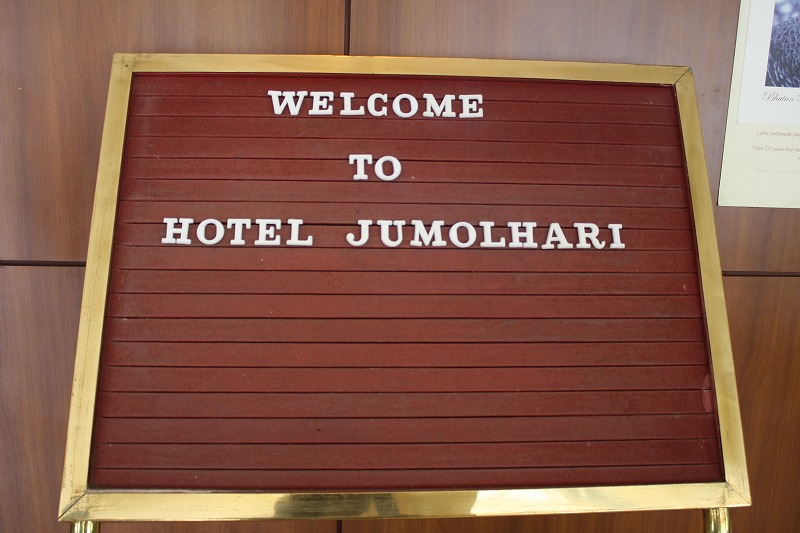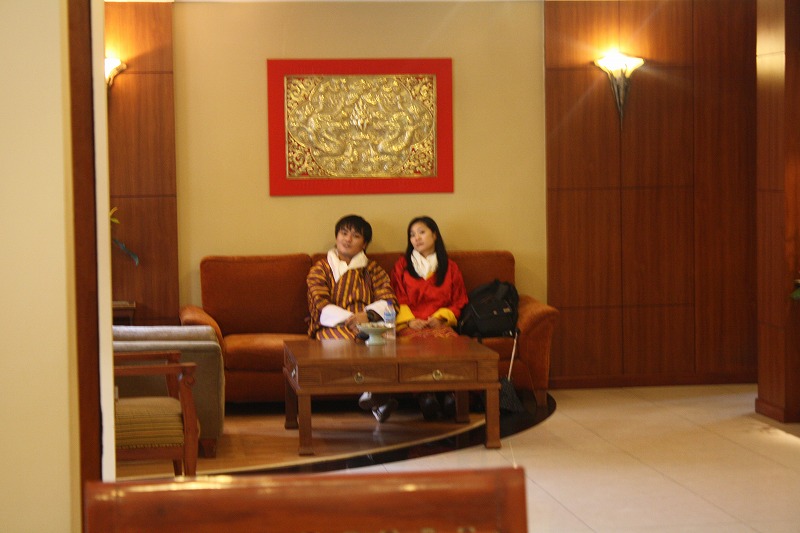potassium hydroxide electrolysis half equation
The solution may be represented by K+(aq) and Cl(aq) At the positive electrode (anode) the following happens: ClCl +e. Purity of 98% is the highest available for . The battery used to drive this reaction must therefore have a potential of at least 4.07 volts. There is a net +7 charge on the left-hand side (1- and 8+), but only a charge of +2 on the right. Chlorine and hydrogen are byproducts of this . Hypokalemia (low potassium) or hyperkalemia (high potassium) may result, At the cathode, water is reduced to hydrogen and oxide ions. To balance these, eight hydrogen ions are added to the left: \[ MnO_4^- + 8H^+ \rightarrow Mn^{2+} + 4H_2O\nonumber \]. { Balancing_Redox_reactions : "property get [Map MindTouch.Deki.Logic.ExtensionProcessorQueryProvider+<>c__DisplayClass228_0.b__1]()", Comparing_Strengths_of_Oxidants_and_Reductants : "property get [Map MindTouch.Deki.Logic.ExtensionProcessorQueryProvider+<>c__DisplayClass228_0.b__1]()", Definitions_of_Oxidation_and_Reduction : "property get [Map MindTouch.Deki.Logic.ExtensionProcessorQueryProvider+<>c__DisplayClass228_0.b__1]()", "Half-Reactions" : "property get [Map MindTouch.Deki.Logic.ExtensionProcessorQueryProvider+<>c__DisplayClass228_0.b__1]()", "Oxidation-Reduction_Reactions" : "property get [Map MindTouch.Deki.Logic.ExtensionProcessorQueryProvider+<>c__DisplayClass228_0.b__1]()", Oxidation_State : "property get [Map MindTouch.Deki.Logic.ExtensionProcessorQueryProvider+<>c__DisplayClass228_0.b__1]()", "Oxidation_States_(Oxidation_Numbers)" : "property get [Map MindTouch.Deki.Logic.ExtensionProcessorQueryProvider+<>c__DisplayClass228_0.b__1]()", Oxidizing_and_Reducing_Agents : "property get [Map MindTouch.Deki.Logic.ExtensionProcessorQueryProvider+<>c__DisplayClass228_0.b__1]()", Standard_Reduction_Potential : "property get [Map MindTouch.Deki.Logic.ExtensionProcessorQueryProvider+<>c__DisplayClass228_0.b__1]()", The_Fall_of_the_Electron : "property get [Map MindTouch.Deki.Logic.ExtensionProcessorQueryProvider+<>c__DisplayClass228_0.b__1]()", Writing_Equations_for_Redox_Reactions : "property get [Map MindTouch.Deki.Logic.ExtensionProcessorQueryProvider+<>c__DisplayClass228_0.b__1]()" }, { Basics_of_Electrochemistry : "property get [Map MindTouch.Deki.Logic.ExtensionProcessorQueryProvider+<>c__DisplayClass228_0.b__1]()", Electrochemistry_and_Thermodynamics : "property get [Map MindTouch.Deki.Logic.ExtensionProcessorQueryProvider+<>c__DisplayClass228_0.b__1]()", Electrodes : "property get [Map MindTouch.Deki.Logic.ExtensionProcessorQueryProvider+<>c__DisplayClass228_0.b__1]()", Electrolytic_Cells : "property get [Map MindTouch.Deki.Logic.ExtensionProcessorQueryProvider+<>c__DisplayClass228_0.b__1]()", Exemplars : "property get [Map MindTouch.Deki.Logic.ExtensionProcessorQueryProvider+<>c__DisplayClass228_0.b__1]()", "Faraday\'s_Law" : "property get [Map MindTouch.Deki.Logic.ExtensionProcessorQueryProvider+<>c__DisplayClass228_0.b__1]()", Nernst_Equation : "property get [Map MindTouch.Deki.Logic.ExtensionProcessorQueryProvider+<>c__DisplayClass228_0.b__1]()", "Nonstandard_Conditions:_The_Nernst_Equation" : "property get [Map MindTouch.Deki.Logic.ExtensionProcessorQueryProvider+<>c__DisplayClass228_0.b__1]()", Redox_Chemistry : "property get [Map MindTouch.Deki.Logic.ExtensionProcessorQueryProvider+<>c__DisplayClass228_0.b__1]()", Redox_Potentials : "property get [Map MindTouch.Deki.Logic.ExtensionProcessorQueryProvider+<>c__DisplayClass228_0.b__1]()", Voltage_Amperage_and_Resistance_Basics : "property get [Map MindTouch.Deki.Logic.ExtensionProcessorQueryProvider+<>c__DisplayClass228_0.b__1]()", Voltaic_Cells : "property get [Map MindTouch.Deki.Logic.ExtensionProcessorQueryProvider+<>c__DisplayClass228_0.b__1]()" }, [ "article:topic", "authorname:clarkj", "showtoc:no", "license:ccbync", "licenseversion:40" ], https://chem.libretexts.org/@app/auth/3/login?returnto=https%3A%2F%2Fchem.libretexts.org%2FBookshelves%2FAnalytical_Chemistry%2FSupplemental_Modules_(Analytical_Chemistry)%2FElectrochemistry%2FRedox_Chemistry%2FWriting_Equations_for_Redox_Reactions, \( \newcommand{\vecs}[1]{\overset { \scriptstyle \rightharpoonup} {\mathbf{#1}}}\) \( \newcommand{\vecd}[1]{\overset{-\!-\!\rightharpoonup}{\vphantom{a}\smash{#1}}} \)\(\newcommand{\id}{\mathrm{id}}\) \( \newcommand{\Span}{\mathrm{span}}\) \( \newcommand{\kernel}{\mathrm{null}\,}\) \( \newcommand{\range}{\mathrm{range}\,}\) \( \newcommand{\RealPart}{\mathrm{Re}}\) \( \newcommand{\ImaginaryPart}{\mathrm{Im}}\) \( \newcommand{\Argument}{\mathrm{Arg}}\) \( \newcommand{\norm}[1]{\| #1 \|}\) \( \newcommand{\inner}[2]{\langle #1, #2 \rangle}\) \( \newcommand{\Span}{\mathrm{span}}\) \(\newcommand{\id}{\mathrm{id}}\) \( \newcommand{\Span}{\mathrm{span}}\) \( \newcommand{\kernel}{\mathrm{null}\,}\) \( \newcommand{\range}{\mathrm{range}\,}\) \( \newcommand{\RealPart}{\mathrm{Re}}\) \( \newcommand{\ImaginaryPart}{\mathrm{Im}}\) \( \newcommand{\Argument}{\mathrm{Arg}}\) \( \newcommand{\norm}[1]{\| #1 \|}\) \( \newcommand{\inner}[2]{\langle #1, #2 \rangle}\) \( \newcommand{\Span}{\mathrm{span}}\)\(\newcommand{\AA}{\unicode[.8,0]{x212B}}\), Working out electron-half-equations and using them to build ionic equations, Balancing reactions under alkaline conditions, status page at https://status.libretexts.org, hydrogen ions (unless the reaction is being done under alkaline conditions, in which case, hydroxide ions must be added and balanced with water). Electrolysis separates the molten ionic compound into its elements. Chemistry Olympiad Prep 2023 - study buddy. Balance the oxygens by adding water molecules. The charges are balanced by adding 4 electrons to the right-hand side to give an overall zero charge on each side: \[ CH_3CH_2OH + H_2O \rightarrow CH_3COOH + 4H^+ + 4e^-\nonumber \]. The Periodic Table
These instructions should be followed carefully in every respect when handling potassium hydroxide and preparing stainless steel for use in an electrolyze: Mixing Potassium Hydroxide Solution Chemical manufacture, cleaning compounds, and petroleum refining all use it. by | Jun 16, 2022 | baja telecaster vs american special | muslim population in spain in 2021. The liquor is. It is slightly soluble in ether. . Alkaline electrolyzers operate via transport of hydroxide ions (OH-) through the electrolyte from the cathode to the anode with hydrogen being generated on the cathode side. State the ions present , name the products and give the electrodes reactions in the electrolysis of - Molten sodium chloride using inert electrodes. These two equations are described as "electron-half-equations," "half-equations," or "ionic-half-equations," or "half-reactions." All SO 42- salts are soluble (with exceptions). Larger exposures cause serious burns with potential subsequent blindness. Related articles. The two half-equations are shown below: It is obvious that the iron reaction will have to happen twice for every chlorine reaction. 4. 2K (s) + Br (l) 2KBr (s). The test for oxygen gas is the glowing splint test. Commercially, potassium hydroxide is produced in electrolytic cells employing asbestos diaphragms as a product liquor containing 10-15 percent KOH and about 10 percent KCl. Read the article and then answer the questions that follow. In the link you were providing these two half-equations are given: E 0 = -2.93 V. E 0 = -0.40 V. In the first equation, replace Na for K. The second equation I had to correct and, as we are working in liquid NaOH, the hydrogen ions will react immediately. Electrolysis of Ionic Compounds Energy Changes Extraction of Aluminium Fuel Cells Hydrates Making Salts Net Ionic Equations Percent Composition Physical and Chemical Changes Precipitation Reaction Reactions of Acids Reactivity Series Redox Reactions Redox Titration Representing Chemical Reactions Single and Double Replacement Reactions Chloride ions lose
KOH is an example of a strong base which means that it dissociates completely in an aqueous solution into its ions. To reduce the number of positive charges on the right-hand side, an electron is added to that side: \[ \ce{Fe^{2+} \rightarrow Fe^{3+} } + e-\nonumber \]. One of the means to improve hydrogen production efficiency is to increase the rate of oxygen evolution of electrolytic water. The half equations are. 1.3.1 Typical Properties of Transition Metals, 1.3.2 Transition Metals vs. Alkali Metals, 2. Aluminium is extracted by the electrolysis of molten aluminium oxide, Al 2 O 3. The half equations are written so that the same number of electrons occur in each equation. Powdered form gives a lilac flame test result ( d ) cathode ) a fine of! K+ + e- -----> K. At the positive electrode. Nitric acid (HNO3) and potassium hydroxide (KOH) react to form water and aqueous potassium nitrate (KNO3). 6
potassium + arrow hydrogen + potassium hydroxide; Give the formula equation for the following reaction. must be heated until it is molten before it
The reaction takes place as below: 2KCl + 2H 2 O 2KOH + Cl 2 + H 2. Electrolysis is a promising option for carbon-free hydrogen production from renewable and nuclear resources. gcsescience.com. , potassium hydroxide electrolysis half equation, Waiting For Godot Ian Mckellen And Patrick Stewart Dvd, Difference Between Catholic And Episcopal Eucharist. Best uni for MSc in Marketing - Bath, Warwick, Durham, Birmingham, Bristol, Exeter? Molten KBr under electrolysis will have the following half equations. The Cu 2+ ion is lower than the H + ion in the electrochemical series. 2AlCl3 ---> 2Al + 3Cl2. Potassium hydroxide is also known as caustic potash, lye, and potash lye. 2e-
Back to Glossary. Ions are discharged at the electrodes producing elements. Extraction of Metals. In this video we will describe the equation KNO3 + H2O and write what happens when KNO3 is dissolved in water.When KNO3 is dissolved in H2O (water) it will d. 18. Combining the half-reactions to make the ionic equation for the reaction. The role of water in the electrolysis of aqueous solutions of electrolytes. This reaction happens in preference to the reduction of potassium partially because reduction of potassium ions would produce potassium metal, which would immediately react with the water, oxidising again to potassium hydroxide and hydrogen gas. chlorine atoms. The liquor is. It shows what happens when ions gain or lose electrons. The unbalanced dichromate (VI) half reaction is written as given: \[ Cr_2O_7^{2-} \rightarrow Cr^{3+}\nonumber \]. Preparation of Potassium Hydroxide. This is easily resolved by adding two electrons to the left-hand side. Write out the resulting ionic equation; Write a half-equation for the oxidation and reduction reaction, balancing charges with electrons; Example. It is a strong base that is marketed in various forms including pellets, shells and powders. To start a Business, what do I do? We also acknowledge previous National Science Foundation support under grant numbers 1246120, 1525057, and 1413739. The balanced half equation is: Al 3+ + 3e- Al (because three negatively charged electrons are needed to balance the three positive charges on the aluminium ion). 2 K + + 2 e - 2 K ( potassium metal at the ( -) cathode ). ElectrolysisSodium is obtained commercially by electrolysis of molten sodium chloride. 2H H 2(g) So the net result is that at the anode chlorine gas is released, at the cathode hydrogen gas is released, and a . Potassium hydroxide is an inorganic compound with the formula K OH, and is commonly called caustic potash . Next the charges are balanced by adding two electrons to the right, making the overall charge on both sides zero: \[ \ce{ H_2O_2 \rightarrow O_2 + 2H^{+} + 2e^{-}}\nonumber \].
In the electrolysis of molten lead(II) bromide the half equation at the negative electrode (cathode) is: At the positive electrode (anode) bromine gas is produced by the discharge of bromide ions: Aluminium ions are discharged at the negative electrode (cathode) and the aluminium is collected at the bottom of the cell: At the positive electrode (anode) oxygen gas is produced: At the negative electrode (cathode), when the metal is more reactive than hydrogen, hydrogen is discharged and the half equation is: When the metal is less reactive than hydrogen, the metal is discharged, e.g. Sie befinden sich hier: cosmetology school atlanta; what is the best definition of allegory? 4K views 3 years ago An animation to look at the half equations from the electrolysis of Copper Chloride. Also, in times of excess electricity production from wind farms, instead of curtailing the electricity as is commonly done, it is possible to use this excess electricity to produce hydrogen through electrolysis. The U.S. Department of Energy and others continue efforts to bring down the cost of renewable-based electricity production and develop more efficient fossil-fuel-based electricity production with carbon capture, utilization, and storage.
The Student Room and The Uni Guide are both part of The Student Room Group. The Potassium ions are positively charged so they go to the cathode to gain electrons and become stable and so the equation would be: 2K+ + 2e- (arrow) 2K , this means that two positively charged potassium ions gain two electrions (reason for the plus) to become stable potassium atoms. In this video we will describe the equation KOH + H2O and write what happens when KOH is dissolved in water.When KOH is dissolved in H2O (water) it will dissociate (dissolve) into K+ and Cl- ions. Anode Reaction: 2H. This arrangement clearly indicates that the magnesium has lost two electrons, and the copper(II) ion has gained them. The half-cell reaction at the anode in PEM water electrolysis is shown in Equation (4): . Manufactured by the electrolysis of a potassium chloride (KCI) solution using membrane electrolytic cells (but non mercury based). NCERT Solutions Class 12 Business Studies, NCERT Solutions Class 12 Accountancy Part 1, NCERT Solutions Class 12 Accountancy Part 2, NCERT Solutions Class 11 Business Studies, NCERT Solutions for Class 10 Social Science, NCERT Solutions for Class 10 Maths Chapter 1, NCERT Solutions for Class 10 Maths Chapter 2, NCERT Solutions for Class 10 Maths Chapter 3, NCERT Solutions for Class 10 Maths Chapter 4, NCERT Solutions for Class 10 Maths Chapter 5, NCERT Solutions for Class 10 Maths Chapter 6, NCERT Solutions for Class 10 Maths Chapter 7, NCERT Solutions for Class 10 Maths Chapter 8, NCERT Solutions for Class 10 Maths Chapter 9, NCERT Solutions for Class 10 Maths Chapter 10, NCERT Solutions for Class 10 Maths Chapter 11, NCERT Solutions for Class 10 Maths Chapter 12, NCERT Solutions for Class 10 Maths Chapter 13, NCERT Solutions for Class 10 Maths Chapter 14, NCERT Solutions for Class 10 Maths Chapter 15, NCERT Solutions for Class 10 Science Chapter 1, NCERT Solutions for Class 10 Science Chapter 2, NCERT Solutions for Class 10 Science Chapter 3, NCERT Solutions for Class 10 Science Chapter 4, NCERT Solutions for Class 10 Science Chapter 5, NCERT Solutions for Class 10 Science Chapter 6, NCERT Solutions for Class 10 Science Chapter 7, NCERT Solutions for Class 10 Science Chapter 8, NCERT Solutions for Class 10 Science Chapter 9, NCERT Solutions for Class 10 Science Chapter 10, NCERT Solutions for Class 10 Science Chapter 11, NCERT Solutions for Class 10 Science Chapter 12, NCERT Solutions for Class 10 Science Chapter 13, NCERT Solutions for Class 10 Science Chapter 14, NCERT Solutions for Class 10 Science Chapter 15, NCERT Solutions for Class 10 Science Chapter 16, NCERT Solutions For Class 9 Social Science, NCERT Solutions For Class 9 Maths Chapter 1, NCERT Solutions For Class 9 Maths Chapter 2, NCERT Solutions For Class 9 Maths Chapter 3, NCERT Solutions For Class 9 Maths Chapter 4, NCERT Solutions For Class 9 Maths Chapter 5, NCERT Solutions For Class 9 Maths Chapter 6, NCERT Solutions For Class 9 Maths Chapter 7, NCERT Solutions For Class 9 Maths Chapter 8, NCERT Solutions For Class 9 Maths Chapter 9, NCERT Solutions For Class 9 Maths Chapter 10, NCERT Solutions For Class 9 Maths Chapter 11, NCERT Solutions For Class 9 Maths Chapter 12, NCERT Solutions For Class 9 Maths Chapter 13, NCERT Solutions For Class 9 Maths Chapter 14, NCERT Solutions For Class 9 Maths Chapter 15, NCERT Solutions for Class 9 Science Chapter 1, NCERT Solutions for Class 9 Science Chapter 2, NCERT Solutions for Class 9 Science Chapter 3, NCERT Solutions for Class 9 Science Chapter 4, NCERT Solutions for Class 9 Science Chapter 5, NCERT Solutions for Class 9 Science Chapter 6, NCERT Solutions for Class 9 Science Chapter 7, NCERT Solutions for Class 9 Science Chapter 8, NCERT Solutions for Class 9 Science Chapter 9, NCERT Solutions for Class 9 Science Chapter 10, NCERT Solutions for Class 9 Science Chapter 11, NCERT Solutions for Class 9 Science Chapter 12, NCERT Solutions for Class 9 Science Chapter 13, NCERT Solutions for Class 9 Science Chapter 14, NCERT Solutions for Class 9 Science Chapter 15, NCERT Solutions for Class 8 Social Science, NCERT Solutions for Class 7 Social Science, NCERT Solutions For Class 6 Social Science, CBSE Previous Year Question Papers Class 10, CBSE Previous Year Question Papers Class 12, Important Questions For Class 12 Chemistry, Important Questions For Class 11 Chemistry, Important Questions For Class 10 Chemistry, Important Questions For Class 9 Chemistry, Important Questions For Class 8 Chemistry, Important Questions For Class 7 Chemistry, Important Questions For Class 6 Chemistry, Class 12 Chemistry Viva Questions With Answers, Class 11 Chemistry Viva Questions With Answers, Class 10 Chemistry Viva Questions With Answers, Class 9 Chemistry Viva Questions With Answers, CBSE Previous Year Question Papers Class 10 Science, CBSE Previous Year Question Papers Class 12 Physics, CBSE Previous Year Question Papers Class 12 Chemistry, CBSE Previous Year Question Papers Class 12 Biology, ICSE Previous Year Question Papers Class 10 Physics, ICSE Previous Year Question Papers Class 10 Chemistry, ICSE Previous Year Question Papers Class 10 Maths, ISC Previous Year Question Papers Class 12 Physics, ISC Previous Year Question Papers Class 12 Chemistry, ISC Previous Year Question Papers Class 12 Biology, JEE Main 2023 Question Papers with Answers, JEE Main 2022 Question Papers with Answers, JEE Advanced 2022 Question Paper with Answers.
What Insurance Does Conviva Accept,
Articles P


















